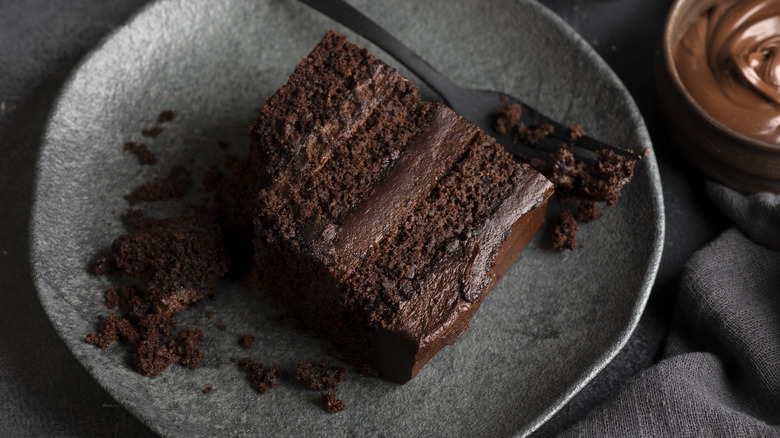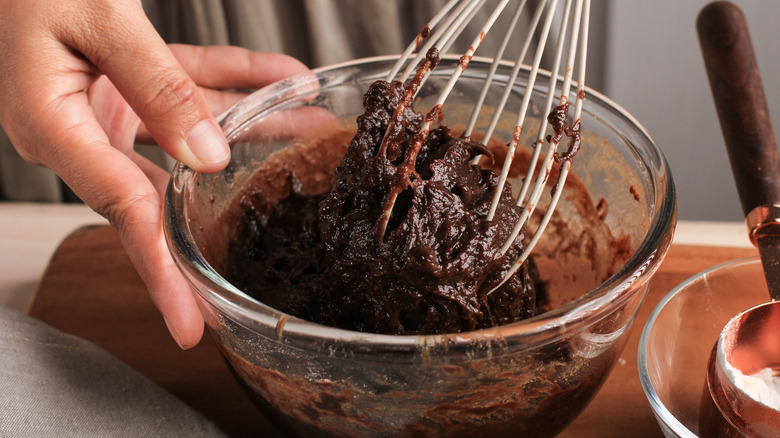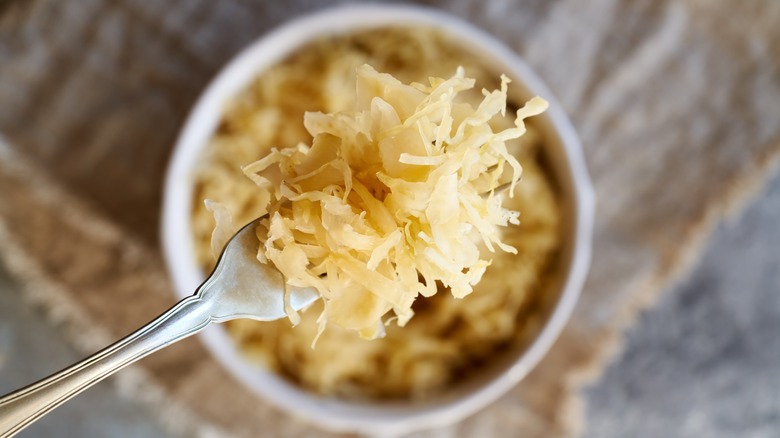Sauerkraut Is The Secret Ingredient That Keeps Chocolate Cake Moist
If your cake recipe calls for butter or oil, a moist final result shouldn't be too difficult to achieve. Because it remains solid at room temperature and doesn't evaporate during the baking process, fat is largely responsible for the moisture in baked goods, cake included. But even if there's a sufficient amount of butter or oil, it's only natural for cakes to dry out over time. To prevent this from happening, it's common to introduce extra moisture by brushing the layers with simple syrup, but a more effective approach is to incorporate sauerkraut into the batter.
The idea of using sauerkraut to keep cakes moist has been around since at least 1948, though fermentation expert Sandor Katz told Atlas Obscura that you could probably find recipes for the cake from before World War II. Still, chocolate sauerkraut cake was popularized in the 1960s when Chicago school cafeteria workers were tasked with making use of the ingredients on the U.S. Department of Agriculture's Surplus Commodity List, one of which was sauerkraut. Food trends from the '60s aren't known for standing the test of time, and this one is no exception. It's definitely worth trying next time you make a cake.
Sauerkraut works best with chocolate cake
The addition of sauerkraut can increase the moisture of any flavor of cake, however, it tends to have the best effect on chocolate cake. Though you might assume this is because chocolate is the best at masking the taste of sauerkraut, the condiment doesn't actually contribute much of its own flavor. Instead, it acts as a flavor enhancer because of how it interacts with chocolate.
Sauerkraut isn't actually pickled in vinegar, but it does become acidic during the fermentation process. Acidic ingredients, when combined with chocolate, intensify its flavors, which explains why buttermilk is often added to chocolate cake. The acidity in the sauerkraut has the same effect. So while you could technically add unfermented sauerkraut, i.e. regular cabbage, to your chocolate cake batter, it would only add moisture, but due to the lack of acidity, it wouldn't develop quite as rich of a chocolate flavor.
How sauerkraut keeps cake moist
Given that sauerkraut is typically reserved for savory foods like hot dogs and Rueben sandwiches, the thought of adding fermented cabbage to a dessert might seem unappetizing, even if the flavor is virtually undetectable. The truth is, sauerkraut's function is a lot like the grated zucchini in a loaf of classic zucchini bread. Much like zucchini, cabbage and therefore sauerkraut has a high water content. That means when you bake it into a cake, you lock in the extra moisture.
When it comes to mixing sauerkraut into cake batter, you don't want to add it straight from the jar, but rather rinse and drain it first. Sauerkraut may technically only be made with cabbage and salt, but as it ferments, it begins to leech its own liquids that develop a tangy flavor. This liquid isn't necessary to achieve a moist crumb, and its tanginess won't do your dessert any favors. You don't want it to be too stringy either, so for best results chop it up after rinsing so it resembles shredded coconut. You'll be amazed by what these little bits of cabbage can do in your desserts.


